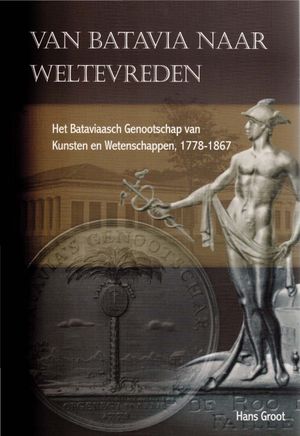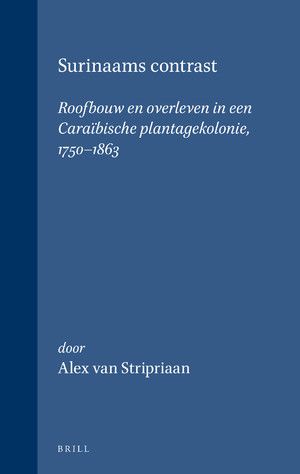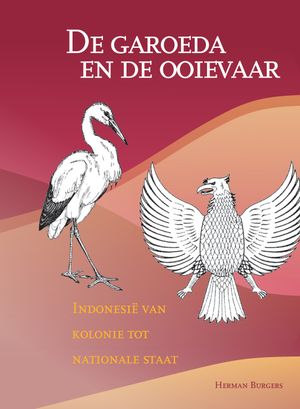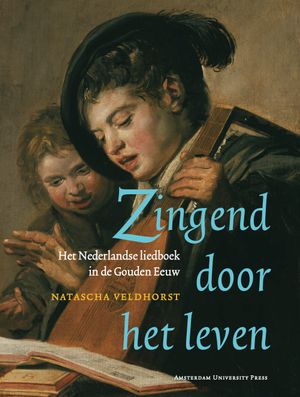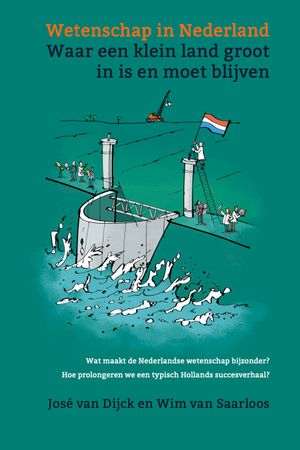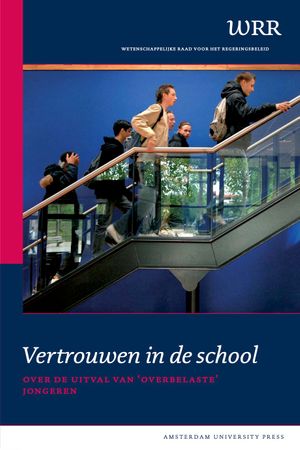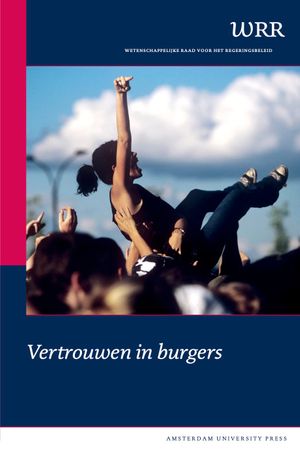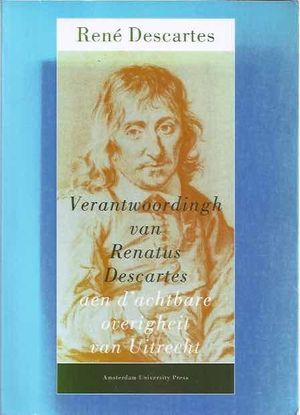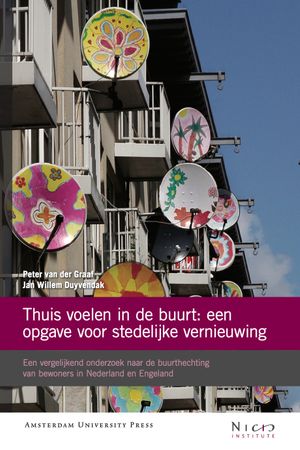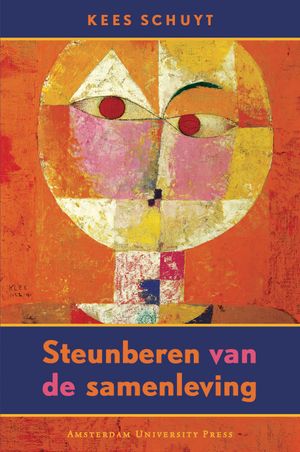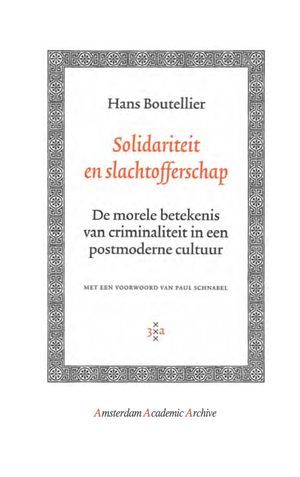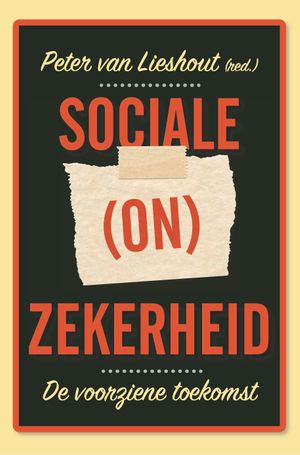Publications
Showing 1–12 of 516 resultsSorted by popularity
Van Batavia naar Weltevreden: Het Bataviaasch Genootschap van Kunsten en Wetenschappan, 1778-1867
The Batavian Society of Arts and Sciences (Bataviaasch Genootschap van Kunsten en Wetenschappen), was founded in 1778 to become the predecessor of the National Library and National Museum of the Republik Indonesia. It was considered to be the most important cultural and scholarly organization of the Netherlands East Indies in the time of the Dutch East India Company (VOC) and the colonial period. This studie pays attention to the foundation, programme and area of interest of the Society, also to its members, organization, growth, decline and resurrection, but most of all to the relation with the government of a formally private enterprise, that sometimes seemed to become part of the governmental structure. The archives of the Society are kept in the National Archives of the Republik Indonesia. Since 1878, they have only scarcely been available to scholars from outside of the Society. They have, however, proven to be of great importance to historians, linguists, and anthropologists.
Surinaams contrast: Roofbouw en overleven in een Caraïbische plantagekolonie, 1750-1863
Plantages en slaven vormden meer dan twee eeuwen de kern van de Surinaamse maatschappij. Surinaams contrast biedt op basis van een bijna tienjarig onderzoek van Nederlands, Surinaams en Engels archiefmateriaal over enkele honderden plantages de meest uitvoerige en diepgaande studie over deze twee
De garoeda en de ooievaar; Indonesië van kolonie tot nationale staat
The second and updated edition of this new study of the genesis of the Indonesian national state is based on the notion that the birth of that nation grew out of not only the liberation movement but also from the Dutch rule that the nationalists agitated against. The book places a clear emphasis on the ways in which Dutch rule was established in the Indonesian archipelago in the course of three centuries and examines the developments of Dutch colonial policies. This feeds into chapters that focus on the Indonesian nationalist movement and the Japanese occupation of the colony in 1942-1945. The occupation helped to enable the proclamation of Indonesian indepence and the creation of the Republic in August 1945. The conflict that erupted between the Repub-lic and the Netherlands was brought to an incomplete ‘solution’ in 1949, but the dis-pute about West-Irian led to a sequel that lasted for another thirteen years. More than half of this book is dedicated to the conflict and its aftermath. Much attention is paid to the sentiments and ideas that informed Dutch policy. Various issues that have received scant attention in the historiography are now dis-cussed. The author based his study on Dutch and international literature, contemporary newspapers and policy documents, and his own memories. In the book’s title, the stork represents the Dutch and the garuda functions as a symbol of Indonesia. J. Herman Burgers (1926) worked at the Dutch Department of Foreign Affairs. He studied Law in Amsterdam and Political Science at Stanford University. He was deeply interested in the conflict between the Netherlands and the Republic of Indone-sia, as it broke out in 1945. This fascination has never left him, and he has continued to study the conflict and its aftermath, especially during the years 1948-1950 when he was in Indonesia for his Dutch military service.
Zingend door het leven: Het Nederlandse liedboek in de Gouden Eeuw
The songbooks are a tangible reminder of the lively seventeenth-century song culture. Young and old, rich and poor: everyone sang, from the cradle to the grave. Natascha Veldhorst shows the diversity and originality of the genre. In addition, the book contains many surprising illustrations that underline how much singing and songbooks were integrated into daily life at the time. Songbooks were long loved by the Dutch population. The genre was invented in the sixteenth century, but remained popular for centuries afterwards. The Golden Age in particular flourished impressively, with hundreds of bundles in various sizes, prices and designs. The Dutch situation was unique in quantity and quality. Nowhere in Europe have the songbooks been produced and purchased with such energy and enthusiasm. Singing through life is devoted to this fascinating cultural-historical phenomenon. The book elaborates on the design and content of the songbooks, the relationship between newly composed and existing music, the influence of publishers and printers, the connections between song culture and theater, the popularity of amorous songbooks with young people, and religious resistance to the compelling influence of music. Thematic chapters are interspersed with twelve short interludes about individual songbooks, which show the great diversity and originality of the genre. Surprising illustrations emphasize how much the songbooks were integrated into everyday life. Song books, paintings and prints are a tangible reminder of our lively seventeenth-century song culture. Young and old, rich and poor: everyone sang, from the cradle to the grave.
Wetenschap in Nederland: Waar een klein land groot in is en moet blijven
Dutch science is doing very well. Our researchers, universities and institutes score remarkably high on global rankings. In this essay, José van Dijck and Wim van Saarloos, president and vice president of the Royal Netherlands Academy of Arts and Sciences, investigate how our small country could become big in science. However, they also show how reaching for higher peaks has sometimes come at the expense of a strong and indispensable foundation. Investments in knowledge, science and innovation are lagging behind, and typical Dutch success factors such as cooperation, trust, a strong civil society and a great intertwining of education and research are under pressure. They conclude with schools of thought that can help success of Dutch science, and to secure its major contributions to society for the future.
Vertrouwen in de school: Over de uitval van ‘overbelaste’ jongeren
Schools must provide education to threatened dropouts, as well as all the social-emotional care and support needed to secure a place in society. Only in schools with such a broad range of tasks is there a real chance to prevent the most vulnerable young people from being completely excluded from society. The government should actively encourage schools and ROCs to offer this broader ‘plus package’. That writes the Scientific Council for Government Policy (WRR) in its report to the government Trust in the school. About the dropout of ‘overloaded’ young people. In this report, the Council focuses on one category of (imminent) dropouts, namely ‘overloaded’ young people. These are young people who suffer from an accumulation of problems, ranging from limited skills and behavioral problems to broken families, poverty, debt or addiction. School dropout is often the prelude to general social dropout among these young people. On the basis of many discussions in the field and study of the domestic and foreign literature, the Council formulates recommendations in this report for effective prevention of early school leaving among these young people. The WRR’s central recommendation is that schools should offer these young people ‘structure’ and ‘connectedness’. The Council advocates a school that assumes a broader view of the task than just the transfer of knowledge and calls schools with such a broad social task definition ‘plus schools’. In this way, the school can develop into a safe haven that counteracts the chaos and risks in their lives.
Vertrouwen in burgers
Actively engaged citizens are vital for a living democracy. They keep representatives of the people and government agencies on their toes, renew society with their ideas and initiatives and provide policy support. It is therefore worrying that only small groups of citizens feel addressed by the way policymakers try to involve them. By means of a literature study and field research, the Council has identified the opportunities and possibilities to entice citizens into active involvement. The Council distinguishes three fields of citizen involvement: policy participation, social participation and social initiative, and makes recommendations for increasing citizen involvement in all fields. Two basic principles are essential for the role of policy makers: think from the perspective of citizens and increase the frameworks for involvement. This WRR research leads to suggestions and advice on how policymakers and policy implementers can make more and better use of the knowledge, skills and preferences of (individual) citizens.
Verantwoordingh van Renatus Descartes aen d’achtbare overigheit van Uitrecht
Utrecht has not only been the first place where Descartes’ ideas were taught, but also the city where Cartesian philosophy was first forbidden. The driving force behind this ban was the pastor and professor of theology Gijsbert Voetius. In 1648 Descartes sent a petition to the Utrecht city center to grant him reparation. The text of this edition is based on a transcription of the Dutch version of this petition, which has never been published before. The Accountability is a true Descartes text that offers a unique insight into the working method of the author.
Thuis voelen in de buurt: een opgave voor stedelijke vernieuwing: Een vergelijkend onderzoek naar de buurthechting van bewoners in Nederland en Engeland
When transforming problem areas into beautiful neighborhoods, much attention is paid to the physical, social and economic aspects of deprivation. Little is known about the relationship between deprivation and emotional connection: what are the effects of urban renewal on the home feeling of these residents? This is central to this research, in which practice in the Netherlands and England is compared. Based on data from the Housing Requirements Research / WoOn (1998 – 2006) and the British Household Panel Survey (1998 – 2003), the neighborhood adhesion of Dutch and English residents has been mapped.
Steunberen van de samenleving: Sociologische essays
What keeps a society together? Common values and norms are usually indicated as the answer to the striking question about the bonding (or social cohesion) of society. However, the author of this new collection of sociological essays is not satisfied with this standard answer. After all, the question must be asked what keeps a society together when common values are no longer present or no longer exist and society threatens to be torn apart by fierce group conflicts and sharp we-they contradictions. In those situations, a society, like a large cathedral, needs a number of buttresses in order not to collapse completely. These buttresses have indeed developed throughout history: a fair trial, religious tolerance, the search for scientific truth and, finally, non-violent conflict resolution. A society desperately needs these historically developed social institutions to deal with many opposing group interests and religious differences without falling into social disorder or destruction. These social institutions provide ‘counterforce’ against too much and too little social bonding. From this perspective, the essays compiled in a well-organized manner have been written and collected here for the first time.
Solidariteit en slachtofferschap: De morele betekenis van criminaliteit in een postmoderne cultuur
What is it that really binds Dutch people together? That’s the central question of many public debates.This study focuses on the the role of victimhood on our concept of society. Drawing on the works of the American philosopher Richard Rorty, the author discusses morality, criminality, religion, sexual abuse and legalisation of prostituiton.
Sociale (on)zekerheid: De voorziene toekomst
In the twentieth century, the debate about the future of social security focused on two key questions: who are eligible for social security and how exactly should whom organize this security? This model came under heavy pressure from the late 1970s. In the meantime, the system has become a lot more austere and the use of collective resources has been roughly halved. A new debate arose from the late 1990s. This concerned developments in the labor market with major consequences for social security: internationalization, automation and flexibility of the labor market. In the past decade it has become increasingly tangible that many certainties that once used to be certainties are no longer, or are no longer experienced as such. It is this quest that is central to the project ‘Future of social security’.


